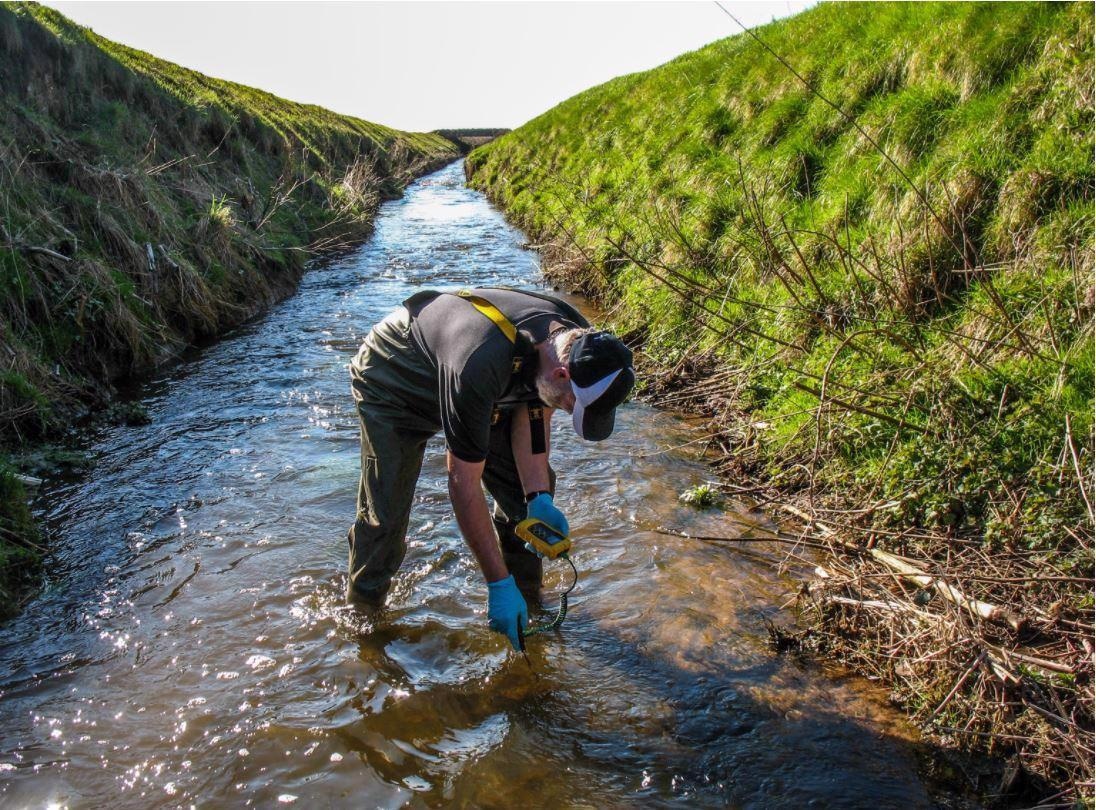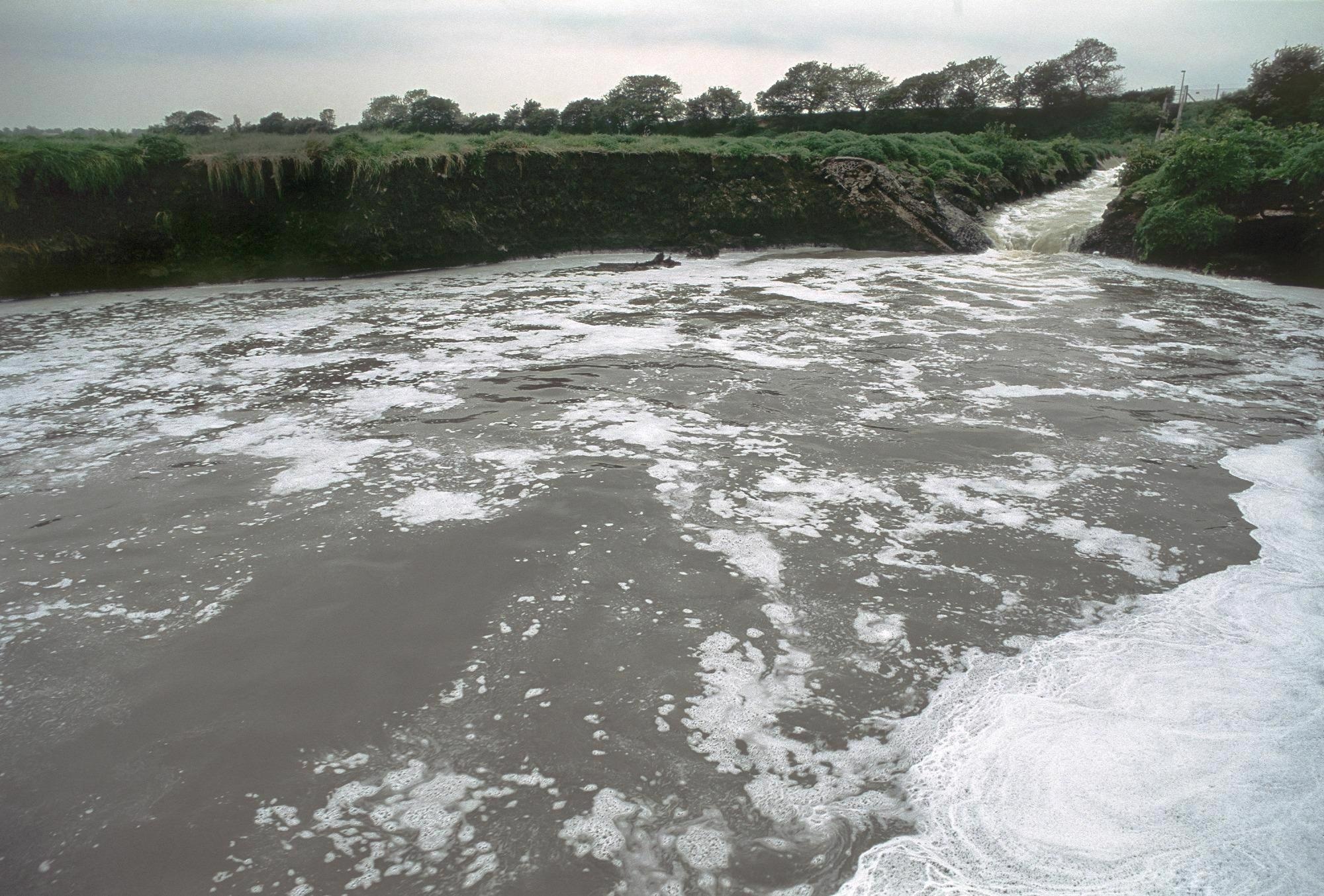AZoCleantech speaks with Peter Hammond from the UK Centre for Ecology and Hydrology. Peter was previously a researcher using the AI to spot subtle signs in children's facial features that could indicate different genetic conditions. The methods and software developed for this previous research are now being used on sewage treatment data without any alteration.
Can you give our readers more information about your recent research?
The research was motivated by a personal interest in the deterioration of the River Windrush, a small tributary of the River Thames that runs next to my house. It has coincided with a surge of interest in the UK on the pollution of rivers and coastal waters by sewage pollution. Citizen and career scientists are making substantial contributions to evidence gathering, and there is a major campaign demanding action from both government and the water industry to clean up our streams and rivers.

Image Credit: UK Centre for Ecology & Hydrology
Can you tell us more about how AI and machine learning were incorporated into this research?
The regular, diurnal pattern of flow through a sewage treatment works (STW) during dry weather is perturbed when excess due to rainfall and surface runoff is diverted from treatment to temporary storage and/or is spilled to watercourses. Machine learning, a specialty area of Artificial Intelligence, uses pattern-matching algorithms to detect these differences in the flow pattern when untreated sewage spills occur.
Can you tell us about your role at the UK Centre for Ecology & Hydrology (UKCEH)?
I was a visiting scientist, but the COVID-19 lockdown limited onsite activities at UKCEH, so much of the work was carried out remotely. This was not a significant problem since most of the research involved data analysis with occasional Zoom-based conference calls.
Environmental science for a world where people and nature prosper
What water pollution issues can AI help to spot? How can the use of AI help in preventing river pollution?
Besides using AI/machine learning to detect untreated sewage spills as described above, similar approaches are being applied to multi-variate analysis of rivers themselves. There are now remote-sensing devices (often called sondes) that measure suspended solids, temperature, conductivity, dissolved oxygen and turbidity with precision and at intervals of a few minutes. By linking sewage flow data and river quality parameters it will be possible to build near real-time monitors to detect polluting effects specific to wastewater treatment as opposed to agriculture.
How do you think the technique developed by the team can be used for future waste spill identification?
Primarily the technique can be used to detect spills of untreated sewage and inform regulatory agencies where they may be missing pollution events, and indicate to water companies which of their assets may be underperforming and need attention.

Image Credit: Shutterstock.com / Silent Corners
The program was initially designed to trace genetics. Can you tell us more about how the course of your research changed?
I had already partly retired from research using 3D neurofacial shape difference to detect the effects of genetic anomalies and teratogens on the development of children and adults with genetic conditions or affected by fetal alcohol syndrome. That research used shape and pattern recognition to distinguish unaffected faces and brains from those where mutations, loss or duplication of genes altered development, resulting in differences in shape. The methods and software developed for that were employed on the sewage treatment data without any alteration.
How important is it to ensure that sewage flow into rivers is stopped as soon as possible?
There is a multitude of reasons. The flora and fauna living in rivers, seas and oceans are showing evidence of damage from a wide range of pollutants and it is our duty to pass on to the next generation a world that is as free from pollution as we can possibly make it. Wastewater now contains residues of pharmaceuticals, toxic chemicals used in industry, micro-plastics from personal products, surfactants from detergents and cleaning products.
There is substantial evidence that heavy metals and the bugs and viruses we excrete mingle at STWs and in the sludge used in agriculture to produce an environment conducive to the development of anti-microbial resistance. The COVID-19 pandemic has alerted the world to the fragility of modern society. Anti-microbial resistance is likely to be an even more serious threat, with predictions of 50 million people per year succumbing to diseases currently under control.
Where can readers find more information?
Your readers can find out more information on the UK Centre for Ecology & Hydrology website.
About Peter Hammond
 Peter Hammond trained in mathematics at Oxford University and in computer science and artificial intelligence at Imperial College. His last posts in a 40 year career were Professor of Computational Biology at UCL’s Institute of Child Health and Senior Fellow in Medical Image Analysis at Oxford University’s Big Data Institute, analyzing neurofacial anatomy for use in epilepsy, medical genetics and teratology.
Peter Hammond trained in mathematics at Oxford University and in computer science and artificial intelligence at Imperial College. His last posts in a 40 year career were Professor of Computational Biology at UCL’s Institute of Child Health and Senior Fellow in Medical Image Analysis at Oxford University’s Big Data Institute, analyzing neurofacial anatomy for use in epilepsy, medical genetics and teratology.
Recent visiting research posts were at Dept. of Human Genetics, Leuven University, Belgium (2017-21) and UK Centre for Ecology & Hydrology (2018-20), the latter arising from an interest in river pollution and using artificial intelligence to detect sewage spills. He lives by an Oxfordshire river.
Disclaimer: The views expressed here are those of the interviewee and do not necessarily represent the views of AZoM.com Limited (T/A) AZoNetwork, the owner and operator of this website. This disclaimer forms part of the Terms and Conditions of use of this website.